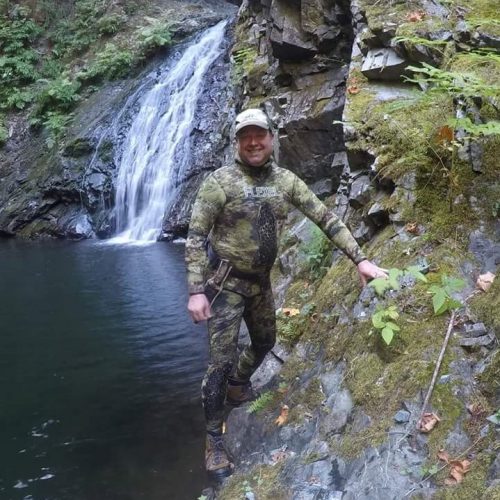Salmon Farms : A River Snorkeler’s Observations
My Name is Chris Walling, and I am a supporter of British Columbia’s salmon farms and farmers.
I have a strong understanding of the importance of wild salmon, and firmly believe that a responsible and successful salmon farming industry is vital in saving wild Pacific salmon for the future. We cannot return to the unsustainable commercial harvesting of wild salmon.
My Experience in Salmon Farm Industry
I have 25 years experience in the dairy farm industry, which gives me a grasp on the complexities of raising livestock, and the two industries share many comparable traits. Along with that, I spent many years as a salmon hatchery volunteer, and I have a strong knowledge of hatchery operations, including net pen projects.
I spend all of my free time – over 400 hrs yearly – snorkelling an average of 16 streams on the East coast of Vancouver island. This year I’ll exceed 30 streams. I do this every month of the year. I observe, record, and report, for my own personal knowledge and to share with others.
I am not compensated in any form, not by industry, not by activism, nor by government, which keeps me completely impartial.
I observe things like, siltation, substrate quality, invasive species, effects of residential development, monitor run-off and view freshwater survivability. Of course the best part is photo-documenting wild salmon. I volunteer this information to most anyone who asks. I do that freely. I realize my sample area is small, but I combine that with the knowledge collected from others to form a complete picture. I like to think I’ve got my finger on the pulse better than most.
Effects of Salmon Farms & Farmers
I began my investigation into the effects of salmon farming on Pacific salmon 15 years ago. I quickly discovered there’s a tremendous amount of misinformation that made gathering facts very difficult, especially from groups of professional activists discrediting the science of our country’s veterinarians. It was then that I realized that I must gather my own information to make an educated judgment.
My first step was to take tours of the salmon farms and rearing hatcheries. I found them very well maintained and the fish visibly healthy. I began to read everything I could find on the subject including aquaculture textbooks. I then took to as many rivers as possible to observe the amount of returning-spawning salmon. If the salmon are returning, then they are obviously surviving and healthy.
During my time in the water I have observed fantastic numbers of spawning salmon. I have record returns of Pink, Chinook, and Chum that have been observed on the East coast of Vancouver Island, central mainland coast, and Northern Vancouver Island.
Some notable examples for 2017 on the ECVI:
- Campbell River, Quinsam River, Puntledge River, Big Qualicum, Little Qualicum and Cowichan river all exceed escapement goals for Chinook.
- Excellent returns of coho were also observed and seemed to be rebounding, though still struggling in many streams.
- The Cowichan is especially noteworthy having set a record for Chinook salmon returns after 8 years of positive growth, and having the 4th largest Chum salmon return on record. Increasing numbers indeed!
These salmon migrate past the Discovery Passage salmon farms twice, once as smolts, and again as returning adults.
I also observed many streams that are struggling. They all had one thing in common; they’d all been through massive habitat destruction. Horrible past logging practices, mine tailings, and residential development, to name a few. A freshwater habitat is complex. It’s easy to destroy, and takes many years to heal. The salmon we see struggling, like the Chinook, Coho, and Sockeye, all spend more than a year in freshwater. They endure low nutrient winters and lethal summer temperatures. I am fortunate enough to observe 5 streams that enter Ladysmith harbour every week in a calendar year. I’ve watched from when the salmon lay eggs and die, till the smolts leave 18 months later, and I’ve watched them thrive or perish depending on habitat conditions.
Once I established a grasp of what was going on in Salmon Farm, I began to contact the professional activist groups.
I was under the impression that they were trying to save wild salmon. I was told my information was counterproductive to their agenda. I then started to respond directly to social media posts, so I could reach the passionate people of BC. I was quickly cut down, blocked and had my information removed. These organizations are heavily aligned and funded by the commercial fishing lobby and are not to be trusted. Instead of donating and supporting professional activism, I encourage people to donate to local community hatcheries instead.
The conclusions I’ve drawn is this:
Salmon farms are having no noticeable impact on wild Pacific salmon, the successful returns are proof of that, and it all begins and ends with freshwater habitat.
By Chris Walling
Please visit my Instagram page for follow up questions and photos;
@steel_snorkel
Related Links:

